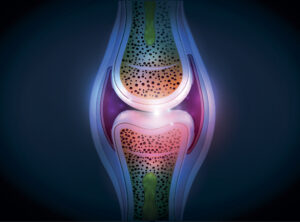Synovial Fluid: The Role in Joint Health
Synovial fluid is a vital component of joint health. It is a thick liquid found in joint cavities. This fluid provides lubrication and nourishment to cartilage, ensuring smooth joint movement. In recent years, synovial fluid has gained attention in autoimmune and inflammatory research. Its composition changes in response to inflammation and autoimmune activity. This makes it a valuable source for understanding joint disorders. Researchers are exploring synovial fluid’s role in autoimmune diseases like rheumatoid arthritis and lupus. By analyzing this fluid, scientists can identify biomarkers for diagnosis and monitoring. This helps in developing targeted therapies for inflammatory conditions.
Synovial fluid analysis is a key tool in understanding and diagnosing joint disorders. It can reveal the presence of immune cells and inflammatory markers. These insights are crucial for understanding disease mechanisms and progression.
Advanced techniques like proteomics and metabolomics are enhancing synovial fluid analysis. These methods provide detailed information about the fluid’s molecular composition. This knowledge is essential for developing new diagnostic and therapeutic strategies. The study of synovial fluid is also important for personalized medicine. It helps tailor treatments to individual patients based on their specific condition. This approach improves treatment outcomes and patient care. Synovial fluid research is expanding our understanding of joint health and disease. It offers insights into the immune response and inflammation. This research is paving the way for innovative treatments and improved patient outcomes. As research progresses, synovial fluid will continue to play a crucial role in autoimmune and inflammatory research. Its potential for advancing medical knowledge and treatment is immense.

Understanding Synovial Fluid: Composition and Function
This highlights the importance of synovial fluid in joint health.
Synovial fluid is more than just a lubricating agent. It plays a crucial role in maintaining joint health and function. This fluid is found within the cavities of synovial joints. These joints are where bones articulate to allow movement. The composition of synovial fluid is complex. It contains various substances that contribute to its unique properties. Key components of synovial fluid include hyaluronic acid, lubricin, proteins, and cytokines. Each of these elements serves a specific function.
Hyaluronic acid is responsible for the fluid’s viscosity. This property helps cushion the joints, reducing friction during movement. Lubricin works alongside hyaluronic acid, providing additional lubrication and preventing wear on joint surfaces. Proteins in synovial fluid include enzymes like proteinases. These enzymes play a role in breaking down damaged tissue. However, when overactive, they may contribute to joint degeneration. Cytokines, on the other hand, are critical in the immune response. They can both promote and mitigate inflammation. Apart from these components, synovial fluid also carries nutrients. It nourishes the cartilage, promoting repair and maintenance. The fluid facilitates the transport of glucose, oxygen, and other substances to joint tissues.
Here’s a summary of synovial fluid’s main components and their functions:
Hyaluronic Acid: Provides viscosity, cushions joints.
Lubricin: Assists lubrication, reduces wear.
Proteins/Proteinases: Tissue breakdown and repair.
Cytokines: Modulate immune response.
Nutrients: Support cartilage health and repair.
The role of synovial fluid extends to shock absorption. It distributes mechanical stress and helps prevent joint damage. The fluid’s balance and composition are essential for joint stability.
In healthy joints, synovial fluid maintains equilibrium. However, inflammation or injury can disrupt this balance. This leads to changes in fluid composition and can signify underlying joint disorders.
Overall, synovial fluid is integral to joint function. Its diverse components work together to support mobility and protect joints. Understanding its composition and function is vital for diagnosing and treating joint diseases.
The Role of Synovial Fluid in Joint Health
Synovial fluid is essential for sustaining joint health and facilitating smooth movements. It is tasked with several critical functions that preserve joint integrity and function. One of the fundamental roles of synovial fluid is to act as a lubricant. It reduces friction between the articular cartilage of synovial joints. This lubrication is crucial, especially during repetitive and strenuous activities, helping prevent wear and tear.In addition to lubrication, synovial fluid also serves as a shock absorber. During activities that involve significant impact, like jumping or running, synovial fluid absorbs and disperses mechanical stress. This capacity helps protect the joints from damage. Nutrient transportation is another key role of synovial fluid. It provides vital nutrients to avascular cartilage. The fluid facilitates the delivery of glucose and oxygen, ensuring that cartilage receives the support needed for maintenance and repair. Synovial fluid also plays a role in joint cleaning. It helps remove metabolic waste products from joint surfaces. This cleaning action is part of a broader function of maintaining a healthy joint environment. Here’s a concise overview of synovial fluid functions:
Lubrication: Minimizes friction between joint surfaces.
Shock Absorption: Distributes impact forces during movement.
Nutrient Transport: Delivers essential nutrients to cartilage.
Joint Cleaning: Removes waste products for joint health.
Lastly, synovial fluid contributes to joint stability. By filling the synovial cavity, it acts as a buffer against disruptions. This buffering capability helps keep the joint aligned during motion. Synovial fluid’s multifaceted role highlights its importance in joint health. Its ability to lubricate, absorb shock, transport nutrients, clean, and stabilize joints underscores its significance. Understanding these roles aids in recognizing disorders linked to synovial fluid imbalances and developing strategies for treatment.

